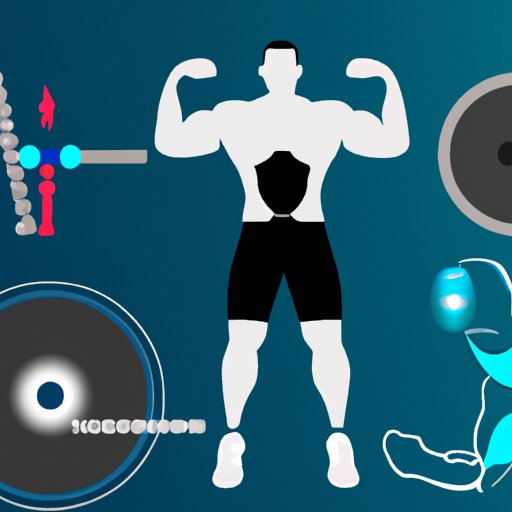Introduction
Fitness is an important part of overall health and wellbeing. It encompasses physical, mental, and emotional aspects that help to maintain a healthy lifestyle. But what exactly does “fitness” mean? Generally speaking, fitness is the ability to perform regular physical activities without becoming overly fatigued or exhausted. To achieve this goal, there are five key components of fitness that should be incorporated into any exercise program: cardiovascular endurance, muscular strength, muscular endurance, flexibility, and body composition.
Component #1: Cardiovascular Endurance
Cardiovascular endurance, also known as aerobic fitness, is the ability of the heart, lungs, and circulatory system to deliver oxygen-rich blood to the working muscles for sustained periods of time. This type of fitness is essential for activities such as running, swimming, cycling, and playing sports. The benefits of developing cardiovascular endurance include improved stamina, increased energy levels, better mood, and reduced risk of disease. Some examples of exercises that can help develop cardiovascular endurance are jogging, biking, swimming, and rowing.
Component #2: Muscular Strength
Muscular strength is the ability of a muscle or group of muscles to exert force against resistance. This type of fitness is important for activities such as lifting weights, carrying heavy objects, and performing everyday tasks. The benefits of developing muscular strength include improved posture, increased bone density, reduced risk of injury, and improved overall appearance. Some examples of exercises that can help build muscular strength are weight training, push-ups, pull-ups, and squats.
Component #3: Muscular Endurance
Muscular endurance is the ability of a muscle or group of muscles to repeatedly exert force against resistance over extended periods of time. This type of fitness is important for activities such as running, swimming, and playing sports. The benefits of developing muscular endurance include enhanced physical performance, improved stamina, and increased energy levels. Some examples of exercises that can help build muscular endurance are running, biking, swimming, and rowing.
Component #4: Flexibility
Flexibility is the ability to move joints and muscles through their full range of motion. This type of fitness is important for activities such as stretching, yoga, and dance. The benefits of developing flexibility include improved posture, increased joint mobility, reduced risk of injury, and improved overall appearance. Some examples of exercises that can help increase flexibility are stretching, yoga, Pilates, and foam rolling.
Component #5: Body Composition
Body composition is the ratio of fat mass to lean mass in the body. This type of fitness is important for activities such as maintaining a healthy weight and reducing the risk of certain diseases. The benefits of improving body composition include improved metabolism, increased energy levels, better mood, and reduced risk of disease. Some examples of exercises that can help improve body composition are weight training, cardio, and interval training.
The Importance of a Balanced Fitness Program
In order to reap the full benefits of fitness, it is important to incorporate all five components into your exercise program. By doing so, you will be able to achieve a more balanced and complete level of fitness. Working on all five components together will help ensure that you are building a strong and healthy body. Additionally, it can help reduce the risk of injuries, boost your energy levels, and improve your overall health.
Incorporating all five components into your exercise regimen can be done in a number of ways. For example, you can alternate between different types of exercises each week to focus on different components. You can also combine different types of exercises into one workout, such as combining weight training with cardio or incorporating flexibility exercises into your strength routine. Additionally, you can use a variety of tools and equipment to work on each component, such as weights, bands, and machines.
Conclusion
Fitness is a broad term that encompasses many different aspects. The five key components of fitness are cardiovascular endurance, muscular strength, muscular endurance, flexibility, and body composition. Developing all five components is essential for achieving a balanced and complete level of fitness. The benefits of working on all five components include improved stamina, increased energy levels, better mood, and reduced risk of injury. Incorporating all five components into your exercise regimen can be done by alternating between different types of exercises each week, combining different types of exercises into one workout, and using a variety of tools and equipment.
(Note: Is this article not meeting your expectations? Do you have knowledge or insights to share? Unlock new opportunities and expand your reach by joining our authors team. Click Registration to join us and share your expertise with our readers.)
